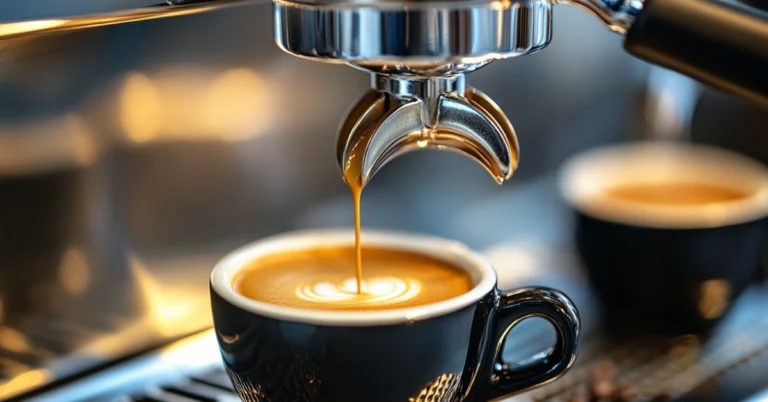There’s something magical about the aroma of freshly brewed espresso. It’s more than just a drink—it’s a moment of indulgence, a ritual that has the power to energize and elevate your day. If you’re someone who loves the rich, velvety taste of espresso but has been struggling to get it just right at home, you’re not alone. Brewing the perfect espresso recipe may seem complicated at first, but with the right ingredients, equipment, and technique, you can create café-quality espresso right in your own kitchen.
In this guide, we’ll walk you through everything you need to know to master the art of the espresso recipe. From selecting the right beans to troubleshooting common issues, you’ll learn how to brew a flawless shot every time. Whether you’re a coffee novice or a seasoned enthusiast, by the end of this article, you’ll feel confident in your ability to brew the perfect espresso recipe at home.
Table of Contents
What is Espresso? A Brief Overview of the Classic Brew
Espresso is the foundation of most coffee drinks—be it a cappuccino, latte, or Americano. But what makes it stand apart from regular coffee?
At its core, an espresso recipe uses a concentrated form of coffee. Unlike traditional brewing methods, espresso involves forcing hot water through finely-ground coffee under high pressure. This creates a small, rich, and flavorful shot of coffee that’s intense yet smooth. It’s the kind of coffee that’s both strong and comforting, with a layer of crema—a golden, velvety foam that sits on top, signaling a well-extracted shot.
While espresso originates from Italy, it has become a staple in coffee cultures worldwide. It’s the base for many of the coffee drinks you see in cafes, but you don’t need to visit a barista to enjoy a quality espresso. With the right tools and a bit of practice, you can easily recreate this classic espresso recipe at home.
What You Need: Coffee, Water, and Equipment
Espresso Ingredients: The Basics
Making a great espresso recipe requires a few key ingredients. Here’s what you’ll need:
Fresh Coffee Beans
| Ingredient | Description | Why It’s Important |
|---|---|---|
| Freshly Roasted Beans | Opt for whole beans, preferably Arabica, and grind them fresh just before brewing. | Fresh beans provide the best aroma and flavor. |
| Filtered Water | Clean water, ideally filtered, will enhance the taste of your espresso. | Water quality affects the overall flavor. |
The Right Equipment
To brew the perfect espresso recipe, the right tools are essential. Here’s what you’ll need:
- Espresso Machine: Semi-automatic or automatic espresso machines are the best choices for home brewing. They offer consistency and control over brewing time and pressure.
- Burr Grinder: A burr grinder is crucial for achieving a consistent grind size, which is essential for a quality shot. Blade grinders tend to produce uneven grinds, which can lead to inconsistent extraction.
- Tamper: You’ll need a tamper to press the ground coffee evenly into the portafilter. Consistent tamping pressure is key for uniform extraction.
- Scale: While not strictly necessary, a scale helps you measure the right amount of coffee for precise brewing.
- Water: Don’t underestimate the importance of water quality. Tap water may contain minerals or chlorine that affect the taste. Use filtered or bottled water for the best results.
By ensuring your ingredients and equipment are top-notch, you lay the foundation for brewing a perfect espresso recipe.
How to Brew the Perfect Espresso: A Simple Guide
Now that you have the right tools and ingredients, let’s dive into the actual process of brewing espresso. It’s not complicated, but it does require attention to detail. Follow these steps, and you’ll be well on your way to mastering the art of an espresso recipe.
Step 1: Grind the Beans
The grind size is one of the most critical factors in brewing an espresso recipe. For espresso, you’ll want a fine, consistent grind—think of table salt or powdered sugar. Grinding your beans right before brewing preserves the freshness and flavor.
- Amount: For a double shot of espresso, use about 18-20 grams of coffee.
- Consistency: A burr grinder will help you achieve uniform grinds. Aim for a grind that feels like fine sand.

Step 2: Dose and Tamp
Once your coffee is ground, it’s time to dose the coffee into the portafilter. The right dose is around 18-20 grams of ground coffee for a double shot. Make sure you distribute the coffee evenly across the portafilter.
Now, tamp the grounds. The key here is even pressure. Use a tamper to press down firmly and evenly. Aim for around 30 pounds of pressure. A consistent tamp will ensure even extraction and a smooth shot of espresso.
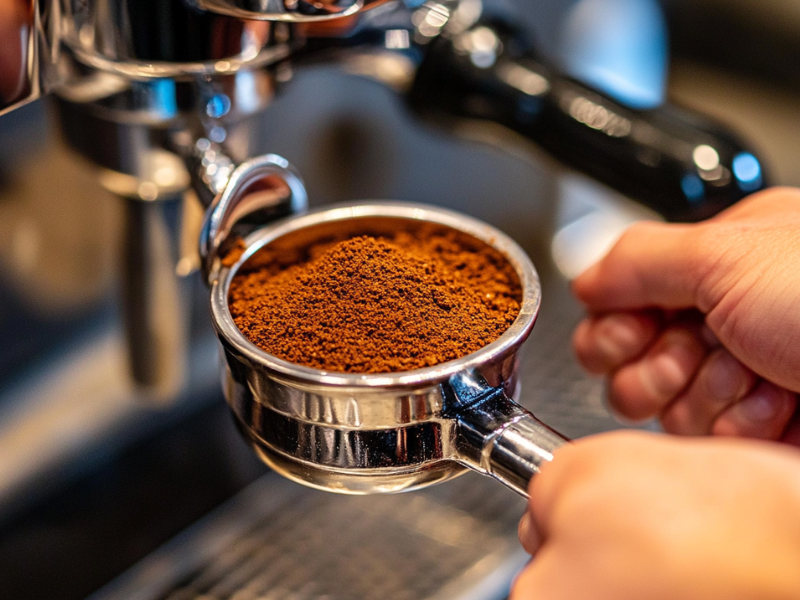
Step 3: Pre-Wet the Grounds
Some espresso enthusiasts recommend pre-wetting the grounds by adding a small amount of hot water before brewing. This step helps to “bloom” the coffee, ensuring that it is evenly saturated before the full extraction begins.
This step is optional but can help improve consistency, especially if you notice channeling (uneven water flow through the coffee puck).
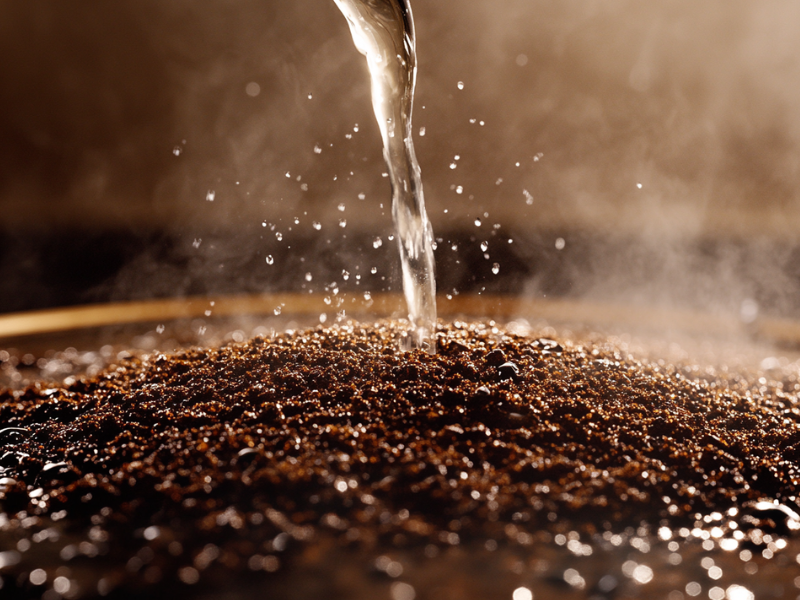
Step 4: Brew Time
When it’s time to brew, start the shot and monitor the time it takes. A well-pulled espresso shot should take about 25-30 seconds to extract. If your shot is flowing too fast (under-extracted) or too slow (over-extracted), adjust your grind size accordingly.
- Under-Extraction: If your shot is watery or sour, try coarsening the grind or shortening the brew time.
- Over-Extraction: If your espresso is too bitter, try making the grind finer or decreasing the brew time.
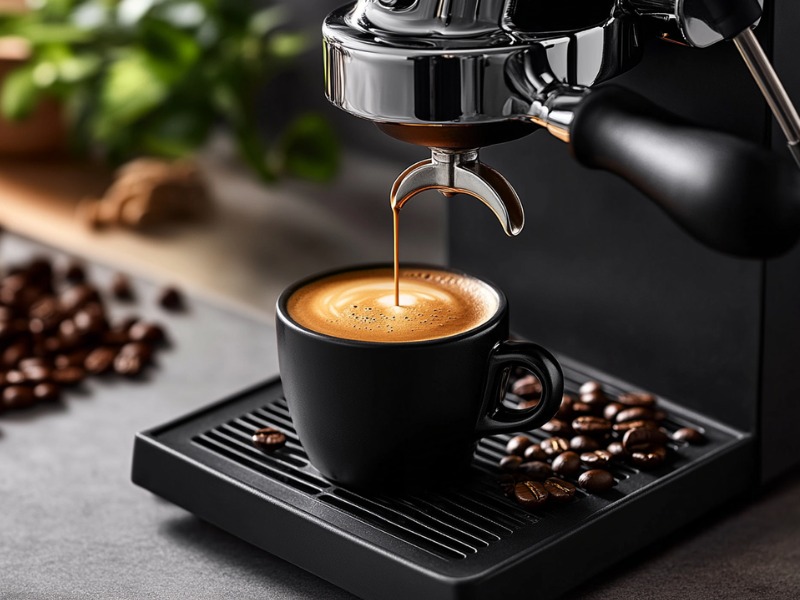
Step 5: Crema
One of the defining features of a well-pulled espresso is the crema. The crema is a thick, golden-brown foam that forms at the top of your espresso. It’s created by the oils and gases from the coffee, and a rich crema indicates that you’ve extracted the coffee correctly.
If your shot lacks crema, it could mean the coffee is stale, the grind is too coarse, or the tamp wasn’t firm enough.
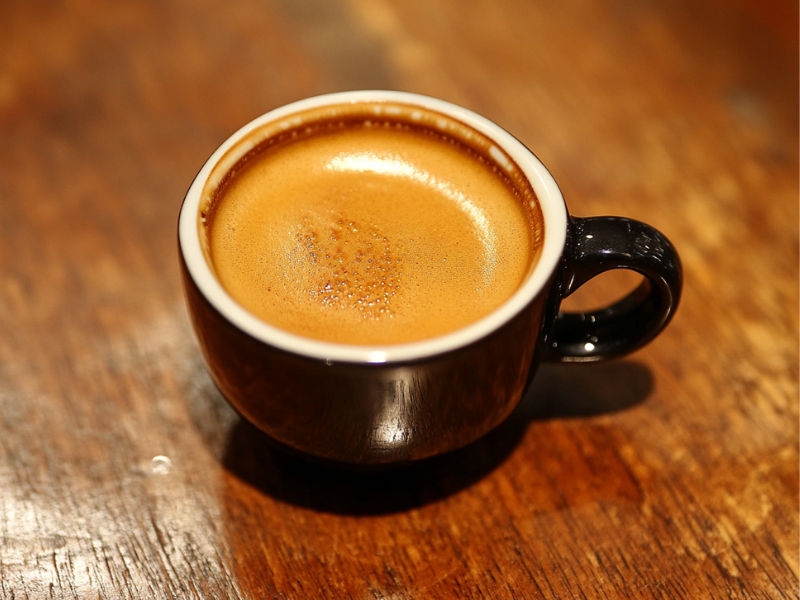
Troubleshooting Common Espresso Issues
Even with the best equipment and ingredients, you may encounter some challenges while brewing espresso recipes. Don’t worry—these problems are easy to fix once you know what to look for.
Under-Extraction (Sour Taste)
- Cause: The grind is too coarse, or the shot pulls too quickly.
- Fix: Make your grind finer and ensure your brewing time is between 25-30 seconds.
Over-Extraction (Bitter Taste)
- Cause: The grind is too fine, or the shot pulls too slowly.
- Fix: Adjust your grind to be slightly coarser and shorten the brew time.
Lack of Crema
- Cause: Stale beans or improper tamping.
- Fix: Use freshly roasted beans and ensure an even, firm tamp.
Take Your Espresso to the Next Level: Expert Tips for Mastery
Once you’ve mastered the basics of brewing espresso, you may want to elevate your skills. Here are a few advanced tips to refine your espresso recipe and experiment with different flavors:
Experiment with Different Beans
Espresso can taste drastically different depending on the beans you use. While dark roasts are traditional, single-origin beans with lighter roasts can bring out unique, fruity, and floral notes. Experiment with different beans to find the flavor profile you enjoy most.
Adjust the Water Temperature
The ideal water temperature for espresso is between 195°F and 205°F. Water that’s too hot can extract bitter flavors, while water that’s too cool can lead to weak, under-extracted shots. If you’re using a machine with temperature control, experiment within this range for the best results.
Dial in Your Grind
If you’re not getting the desired flavor from your espresso recipe, it may be worth adjusting your grind slightly. Finer grinds typically result in stronger, more intense shots, while coarser grinds tend to make milder espresso. Small tweaks can make a big difference, so don’t be afraid to experiment.
Try Your Hand at Espresso Art
Once you’re comfortable making great espresso shots, you can start experimenting with latte art. Latte art requires steaming milk to the perfect texture and pouring it in a controlled manner. Mastering this skill is a fun way to add a personal touch to your espresso recipes.
Espresso Recipes Beyond the Shot: Explore Delicious Variations
Espresso is versatile and can be used as a base for a variety of delicious drinks. Here are a few espresso recipes to try at home:
| Drink | Ingredients | Instructions |
|---|---|---|
| Latte | 1 shot espresso, 8 oz steamed milk, light foam | Brew espresso, steam milk, pour over espresso, and top with light foam. |
| Cappuccino | 1 shot espresso, 4 oz steamed milk, thick foam | Brew espresso, steam milk to a thick foam, pour over espresso. |
| Americano | 1 shot espresso, 6-8 oz hot water | Brew espresso, add hot water to dilute. |
| Macchiato | 1 shot espresso, 1 tsp foamed milk | Brew espresso, top with a small amount of foamed milk. |
Conclusion: Your Perfect Espresso Journey
Mastering the espresso recipe is a rewarding experience. With patience and practice, you can perfect your shot and enjoy the rich, intense flavors that only a freshly brewed espresso can provide. Whether you’re brewing a classic shot or exploring new espresso-based drinks, always remember that the key to a great espresso lies in the details.
By using fresh, high-quality beans, the right equipment, and a bit of attention to your technique, you’ll soon be able to brew espresso that rivals your favorite café. Enjoy the process, and keep refining your espresso recipe to suit your taste. Happy brewing!
Call to Action: Share Your Espresso Recipe
What’s your go-to espresso recipe? We’d love to hear about it! Share your tips and favorite brewing methods in the comments below. If you found this guide helpful, don’t forget to subscribe for more espresso tips and tricks. Let’s keep brewing!
FAQ: All About the Espresso Recipe
1. What’s the easiest espresso recipe to try at home?
Start with 18-20 grams of finely ground coffee for a double shot. Brew at 200°F for 25-30 seconds. Simple, fresh, and balanced.
2. Can I make espresso without a machine?
Yes! Use a Moka pot or AeroPress for a strong, espresso-like coffee, though it won’t have the full crema of an espresso machine.
3. How do I adjust my espresso recipe for strength?
- Stronger: Increase coffee dose or use a finer grind.
- Milder: Decrease coffee dose or use a coarser grind.
4. Why is my espresso shot bitter or sour?
- Sour: Likely under-extracted; try a finer grind and longer brew time.
- Bitter: Likely over-extracted; try a coarser grind and shorter brew time.
5. What’s the ideal water temperature?
Brew at 195°F–205°F for the best extraction and flavor balance.
6. How do I get the perfect crema?
- Use fresh beans, fine grind, and even tamping.
- Ensure your machine is at the right pressure and temperature.
7. How can I make an espresso-based drink?
Start with your espresso recipe:
- Latte: Brew espresso, steam 8 oz milk, and combine.
- Cappuccino: Brew espresso, steam 4 oz milk foam, and pour.
8. Can I use pre-ground coffee?
You can, but freshly ground beans give better flavor. Pre-ground coffee tends to lose freshness quickly.
9. How do I store my espresso beans?
Store in an airtight container in a cool, dark place. Use within 1-2 weeks for optimal freshness.
10. How long does it take to master an espresso recipe?
It varies, but with practice, you’ll see consistent results within a few weeks.
There are no reviews yet. Be the first one to write one.

